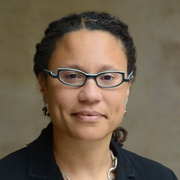
Afghan National Army Special Forces and commandos, from 6th Special Operations Kandak, load onto a Mi17 helicopter from Special Missions Wing unit while conducting mission readiness training, near Kabul province, Afghanistan, May 29, 2014. U.S. Army photo by Spc. Connor Mendez
What Does ‘Security’ in Post-2014 Afghanistan Really Mean?
It’s not just about troops on the ground and the readiness of the Afghan security forces. By Catherine Powell
Earlier this month, the United States and NATO lowered the flags over their mission in Kabul in the first of two ceremonies that mark the end of the international combat mission in Afghanistan. Over the next few weeks, foreign troops in Afghanistan will be transitioning to a training and support role.
To discuss the future of Afghan security and the Afghan people—particularly women and girls—after this momentous event, I hosted a roundtable with Dr. Barnett Rubin, director and senior fellow at New York University’s Center on International Cooperation, and Rina Amiri, a senior mediator at the United Nations. Our conversation focused on how stability in Afghanistan is not only relevant to U.S. national security interests, but also critical for the future opportunities, prosperity, and rights of Afghan women. In order for Afghan women to be part of the public sphere, including working outside the home or attending school, stability and security on the ground is paramount.
Yet the traditional definition of security—in this context, one that focuses solely on the presence of foreign troops or the readiness of the Afghan security forces—is insufficient to understand the needs of Afghan women and girls after 2014. Establishing an environment where Afghan women can thrive requires the United States to embrace a wider definition of security that includes economic security, human security, and inclusive security.
(Related: Obama Orders Expanded US Role in Afghanistan)
Since at least the Cold War, policymakers have come to realize that economic strength contributes equally, if not more, than strategic position and political influence to the establishment of lasting stability and security. As such, economic security is especially critical in peacebuilding and postconflict reconstruction. Mass poverty and lack of economic opportunity allow extremism to flourish; encouraging economic growth, therefore, can help prevent future outbreaks of conflict.
The participation of women in the economy is an important element of generating growth and thus of economic security. Not only is women’s economic inclusion critical for their own empowerment, but it also correlates with better economic and social outcomes. When women earn money, they pay their incomes forward into their communities, families, and children, reinvesting 90 percent of it. Moreover, girls with higher levels of education marry later, have smaller families, and experience reduced incidences of HIV/AIDS, minimizing the potential for poverty for their children. A child whose mother can read is 50 percent more likely to survive past the age of five, and each extra year of a mother’s schooling reduces the probability of an infant dying by 5 percent to 10 percent. Thus, educating mothers is an essential investment in the next generation, with economic and social benefits that have cumulative consequences for stability.
In the past two decades, the definition of security has broadened even further.
Human security, as defined by the 1994 UN Human Development Report, is the “protection from the threat of disease, hunger, unemployment, crime, social conflict, political repression, and environmental hazards.” Again, focusing on the personal safety of individuals and families limits the probability of violence and extremism taking hold. The minimization of these ills—especially disease, crime, and environmental hazards—is critical for the mobility of women. Without public safety, women’s access to school, employment, and more outside the home is greatly decreased, thus limiting their opportunities for empowerment and advancement.
(Read More: How Afghans Feel About the Direction of Their Country)
More recently, the security definition has expanded to include inclusive security, referring to a “diverse, citizen-driven approach to global stability,” as defined by Swanee Hunt in a 2001 Foreign Policy article. Hunt’s security framework emphasizes women’s agency, rather than their vulnerability, and argues that women play a critical role in establishing lasting peace. Women are often at the center of popular protest movements and civil society groups, making their participation in postconflict negotiations and other political processes invaluable.
As these factors become accepted as critical to security in the twenty-first century, the United States and NATO should seek to support Afghans as they establish this fullest sense of security in Afghanistan. Embracing this multifaceted definition of security and furthering women’s empowerment will then pay further dividends: ensuring more long-lasting stability and a more secure future for all.
This post appears courtesy of CFR.org.
NEXT STORY: Why the US Can't Punish North Korea




